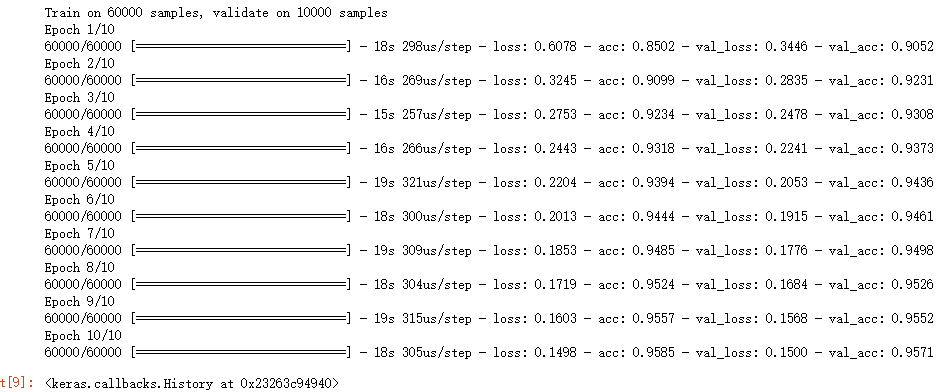# 1. 数据预处理。 import keras from keras.models import Model from keras.datasets import mnist from keras.layers import Input, Dense from tflearn.layers.core import fully_connected num_classes = 10 img_rows, img_cols = 28, 28 # 通过Keras封装好的API加载MNIST数据。 (trainX, trainY), (testX, testY) = mnist.load_data() trainX = trainX.reshape(trainX.shape[0], img_rows * img_cols) testX = testX.reshape(testX.shape[0], img_rows * img_cols) # 将图像像素转化为0到1之间的实数。 trainX = trainX.astype('float32') testX = testX.astype('float32') trainX /= 255.0 testX /= 255.0 # 将标准答案转化为需要的格式(one-hot编码)。 trainY = keras.utils.to_categorical(trainY, num_classes) testY = keras.utils.to_categorical(testY, num_classes)
# 2. 通过返回值的方式定义模型。 inputs = Input(shape=(784,)) x = Dense(500, activation='relu')(inputs) predictions = Dense(10, activation='softmax')(x) model = Model(inputs=inputs, outputs=predictions) model.compile(loss=keras.losses.categorical_crossentropy,optimizer=keras.optimizers.SGD(),metrics=['accuracy'])
# 3. 训练模型。 model.fit(trainX, trainY,batch_size=32,epochs=10,validation_data=(testX, testY))

